

Oil & Gas Geology ›› 2024, Vol. 45 ›› Issue (4): 893-909.doi: 10.11743/ogg20240402
• Petroleum Geology • Previous Articles Next Articles
Zongquan HU1,2,3( ), Zhongbao LIU1,2,3, Qianwen LI1,2,3, Zhoufan WU4
), Zhongbao LIU1,2,3, Qianwen LI1,2,3, Zhoufan WU4
Received:2024-04-17
Revised:2024-07-12
Online:2024-09-05
Published:2024-09-05
CLC Number:
Zongquan HU, Zhongbao LIU, Qianwen LI, Zhoufan WU. Exploring source rock-reservoir coupling mechanisms in lacustrine shales based on varying-scale lithofacies assemblages: A case study of the Jurassic shale intervals in the Sichuan Basin[J]. Oil & Gas Geology, 2024, 45(4): 893-909.
Add to citation manager EndNote|Reference Manager|ProCite|BibTeX|RefWorks
Table 1
Major lithofacies types and their characteristics of the Jurassic shale intervals in the Sichuan Basin"
| 岩相类型 | 岩心照片 | 薄片显微照片 | TOC分级 | 发育特征及分布 |
|---|---|---|---|---|
| 黏土质页岩岩相 |  | 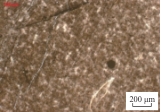 | 以中碳为主,其次为低碳、高碳,局部含碳、富碳 | 以泥质结构为主,少许粉砂碎屑星点分布。黏土矿物为隐晶状、显微鳞片状,部分呈拉长状,其长轴具定向分布。有机质呈斑点状、短细条状分散分布。主要发育于复兴地区东岳庙段,元坝及复兴地区大安寨段 |
| 纹层-薄层状介壳灰质页岩岩相 |  |  | 以中碳为主、 其次为高碳 | 发育介壳纹层与薄层,镜下仍以泥质结构为主,隐晶状黏土矿物与有机质相混,岩心上可见介壳呈层状定向排列富集。主要发育于复兴地区东岳庙段,元坝、阆中及复兴地区大安寨段 |
| (纹层状)粉砂质页岩岩相 |  | 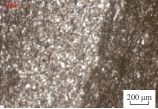 | 以含碳、低碳为主,局部中碳、高碳 | 岩心上可见粉砂质纹层,镜下粉砂泥质结构,粉砂碎屑与隐晶状黏土矿物相混,粉砂碎屑以石英为主,次棱-次圆状,有机质呈斑点状、弯曲拉长状分散分布。主要发育于元坝地区东岳庙段、大安寨段与千佛崖组、复兴地区凉高山组 |
| 混合质页岩岩相 | 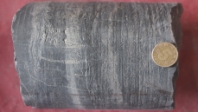 | 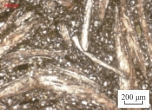 | 以低碳、中碳为主,局部高碳 | 发育泥质结构和粒屑结构,主要由隐晶状黏土矿物、介壳及粉砂碎屑组成,介壳由方解石颗粒组成,有重结晶现象。主要发育于复兴地区东岳庙段底部、复兴及元坝地区大安寨段局部层段 |
| 介壳灰岩岩相 | 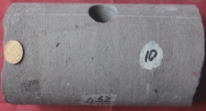 | 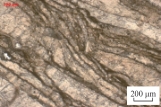 | 低碳 | 发育粒屑结构和晶粒结构,主要由隐晶状黏土矿物、介壳组成,隐晶黏土矿物呈弯曲隙状、团粒状分布于粒间,多相混黑色有机质,介壳由纤柱状方解石组成,少许粒内具硅化作用。主要发育于复兴地区东岳庙段,复兴、阆中及元坝地区大安寨段 |
| 粉砂岩岩相 |  | 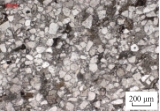 | 低碳 | 发育粉砂结构,主要由石英组成,含少许长石和岩屑。石英颗粒可见不规则溶蚀边;长石可见双晶,部分颗粒具碳酸盐化;粒间主要是隐晶质黏土矿物,分布不均匀。主要发育于元坝地区东岳庙段、复兴凉高山组及元坝千佛崖组 |
| 1 | 邹才能, 马锋, 潘松圻, 等. 全球页岩油形成分布潜力及中国陆相页岩油理论技术进展[J]. 地学前缘, 2023, 30(1): 128-142. |
| ZOU Caineng, MA Feng, PAN Songqi, et al. Formation and distribution potential of global shale oil and the developments of continental shale oil theory and technology in China[J]. Earth Science Frontiers, 2023, 30(1): 128-142. | |
| 2 | 金之钧, 白振瑞, 高波, 等. 中国迎来页岩油气革命了吗?[J]. 石油与天然气地质, 2019, 40(3): 451-458. |
| JIN Zhijun, BAI Zhenrui, GAO Bo, et al. Has China ushered in the shale oil and gas revolution?[J]. Oil & Gas Geology, 2019, 40(3): 451-458. | |
| 3 | 唐令, 宋岩, 陈晓智, 等. 页岩气选区评价关键参数及上下限——以四川盆地五峰组—龙马溪组为例[J]. 天然气地球科学, 2023, 34(1): 153-168. |
| TANG Ling, SONG Yan, CHEN Xiaozhi, et al. Key parameters and the upper-lower limits of shale gas selection evaluation: Case study from the Wufeng-Longmaxi formations in the Sichuan Basin[J]. Natural Gas Geoscience, 2023, 34(1): 153-168. | |
| 4 | 唐令, 宋岩, 赵志刚, 等. 四川盆地上奥陶统五峰组—下志留统龙马溪组页岩气藏超压成因及演化规律[J]. 天然气工业, 2022, 42(10): 37-53. |
| TANG Ling, SONG Yan, ZHAO Zhigang, et al. Origin and evolution of overpressure in shale gas reservoirs of the Upper Ordovician Wufeng Formation-Lower Silurian Longmaxi Formation in the Sichuan Basin[J]. Natural Gas Industry, 2022, 42(10): 37-53. | |
| 5 | 武瑾, 李玮, 刘鑫, 等. 四川盆地海相页岩气碳同位素特征及指示意义[J]. 特种油气藏, 2022, 29(5): 36-41. |
| WU Jin, LI Wei, LIU Xin, et al. Characteristics and indicative significance of carbon isotopes of marine shale gas in Sichuan Basin[J]. Special Oil & Gas Reservoirs, 2022, 29(5): 36-41. | |
| 6 | TANG Ling, WANG Pengfei, ZHAO Zhigang, et al. Overpressure origin and evolution during burial in the shale gas plays of the Wufeng-Longmaxi formations of southern Sichuan Basin[J]. Geoenergy Science and Engineering, 2024, 236: 212729. |
| 7 | 马永生, 蔡勋育, 赵培荣, 等. 中国陆相页岩油地质特征与勘探实践[J]. 地质学报, 2022, 96(1): 155-171. |
| MA Yongsheng, CAI Xunyu, ZHAO Peirong, et al. Geological characteristics and exploration practices of continental shale oil in China[J]. Acta Geologica Sinica, 2022, 96(1): 155-171. | |
| 8 | 高波, 武晓玲, 张英, 等. 鄂尔多斯盆地南部张家滩油页岩生烃演化特征[J]. 石油实验地质, 2022, 44(1): 24-32. |
| GAO Bo, WU Xiaoling, ZHANG Ying, et al. Hydrocarbon generation and evolution characteristics of Triassic Zhangjiatan oil shale in southern Ordos Basin[J]. Petroleum Geology and Experiment, 2022, 44(1): 24-32. | |
| 9 | 马存飞, 孙文静, 曾令鹏, 等. 沧东凹陷孔二段页岩中基于岩心裂缝观测的构造裂缝规模解析[J]. 中国石油大学学报(自然科学版), 2023, 47(4): 1-11. |
| MA Cunfei, SUN Wenjing, ZENG Lingpeng, et al. Mathematical analysis of structural fracture scale in shale based on core fracture observation of the second member of Kongdian Formation in Cangdong Sag[J]. Journal of China University of Petroleum (Edition of Natural Science), 2023, 47(4): 1-11. | |
| 10 | 王小军, 宋永, 郭旭光, 等. 陆相咸化湖盆细粒沉积岩分类及其石油地质意义[J]. 沉积学报, 2023, 41(1): 303-317. |
| WANG Xiaojun, SONG Yong, GUO Xuguang, et al. Classification of fine-grained sedimentary rocks in saline lacustrine basins and its petroleum geological significance[J]. Acta Sedimentologica Sinica, 2023, 41(1): 303-317. | |
| 11 | 胡宗全, 王濡岳, 刘忠宝, 等. 四川盆地下侏罗统陆相页岩气源储特征及耦合评价[J]. 地学前缘, 2021, 28(1): 261-272. |
| HU Zongquan, WANG Ruyue, LIU Zhongbao, et al. Source-reservoir characteristics and coupling evaluations for the Lower Jurassic lacustrine shale gas reservoir in the Sichuan Basin[J]. Earth Science Frontiers, 2021, 28(1): 261-272. | |
| 12 | 焦方正, 邹才能, 杨智. 陆相源内石油聚集地质理论认识及勘探开发实践[J]. 石油勘探与开发, 2020, 47(6): 1067-1078. |
| JIAO Fangzheng, ZOU Caineng, YANG Zhi. Geological theory and exploration & development practice of hydrocarbon accumulation inside continental source kitchens[J]. Petroleum Exploration and Development, 2020, 47(6): 1067-1078. | |
| 13 | 邹才能, 杨智, 董大忠, 等. 非常规源岩层系油气形成分布与前景展望[J]. 地球科学, 2022, 47(5): 1517-1533. |
| ZOU Caineng, YANG Zhi, DONG Dazhong, et al. Formation, distribution and prospect of unconventional hydrocarbons in source rock strata in China[J]. Earth Science, 2022, 47(5): 1517-1533. | |
| 14 | 王小军, 宋永, 郭旭光, 等. 陆相咸化湖盆细粒沉积岩分类及其石油地质意义[J]. 沉积学报, 2023, 41(1): 303-317. |
| WANG Xiaojun, SONG Yong, GUO Xuguang, et al. Classification of fine-grained sedimentary rocks in saline lacustrine basins and its petroleum geological significance[J]. Acta Sedimentologica Sinica, 2023, 41(1): 303-317. | |
| 15 | 张顺, 刘惠民, 陈世悦, 等. 中国东部断陷湖盆细粒沉积岩岩相划分方案探讨——以渤海湾盆地南部古近系细粒沉积岩为例[J]. 地质学报, 2017, 91(5): 1108-1119. |
| ZHANG Shun, LIU Huimin, CHEN Shiyue, et al. Classification scheme for lithofacies of fine-grained sedimentary rocks in faulted basins of eastern China: Insights from the fine-grained sedimentary rocks in Paleogene, southern Bohai Bay Basin[J]. Acta Geologica Sinica, 2017, 91(5): 1108-1119. | |
| 16 | 柳波, 石佳欣, 付晓飞, 等. 陆相泥页岩层系岩相特征与页岩油富集条件——以松辽盆地古龙凹陷白垩系青山口组一段富有机质泥页岩为例[J]. 石油勘探与开发, 2018, 45(5): 828-838. |
| LIU Bo, SHI Jiaxin, FU Xiaofei, et al. Petrological characteristics and shale oil enrichment of lacustrine fine-grained sedimentary system: A case study of organic-rich shale in first member of Cretaceous Qingshankou Formation in Gulong Sag, Songliao Basin, NE China[J]. Petroleum Exploration and Development, 2018, 45(5): 828-838. | |
| 17 | 刘惠民, 王勇, 杨永红, 等. 东营凹陷细粒混积岩发育环境及其岩相组合:以沙四上亚段泥页岩细粒沉积为例[J]. 地球科学, 2020, 45(10): 3543-3555. |
| LIU Huimin, WANG Yong, YANG Yonghong, et al. Sedimentary environment and lithofacies of fine-grained hybrid sedimentary in Dongying Sag: A case of fine-grained sedimentary system of the Es4 [J]. Earth Science, 2020, 45(10): 3543-3555. | |
| 18 | 易娟子, 张少敏, 蔡来星, 等. 川东地区下侏罗统凉高山组地层-沉积充填特征与油气勘探方向[J]. 吉林大学学报(地球科学版), 2022, 52(3): 795-815. |
| YI Juanzi, ZHANG Shaomin, CAI Laixing, et al. Strata and sedimentary filling characteristics of the Lower Jurassic Lianggaoshan Formation and its hydrocarbon exploration in eastern Sichuan Basin[J]. Journal of Jilin University(Earth Science Edition), 2022, 52(3): 795-815. | |
| 19 | 杨帅. 四川盆地侏罗系沉积演化与相控储层预测[D]. 成都: 成都理工大学, 2014. |
| YANG Shuai. Sedimentary evolution during Jurassic and faces-controlling reservoir prediction in Sichuan Basin, China[D]. Chengdu: Chengdu University of Technology, 2014. | |
| 20 | LI Qianwen, LIU Zhongbao, CHEN Feiran, et al. Behavior and controlling factors of methane adsorption in Jurassic continental shale, northeastern Sichuan Basin[J]. Energy Geoscience, 2023, 4(1): 83-92. |
| 21 | 舒志国, 周林, 李雄, 等. 四川盆地东部复兴地区侏罗系自流井组东岳庙段陆相页岩凝析气藏地质特征及勘探开发前景[J]. 石油与天然气地质, 2021, 42(1): 212-223. |
| SHU Zhiguo, ZHOU Lin, LI Xiong, et al. Geological characteristics of gas condensate reservoirs and their exploration and development prospect in the Jurassic continental shale of the Dongyuemiao Member of Ziliujing Formation, Fuxing area, eastern Sichuan Basin[J]. Oil & Gas Geology, 2021, 42(1): 212-223. | |
| 22 | 李楚楚, 洪秀娥, 韩登林, 等. 湖相混积岩有利储层岩性测井识别方法——以大王庄油田沙三上亚段为例[J]. 石油地质与工程, 2023, 37(4): 37-44. |
| LI Chuchu, HONG Xiue, HAN Denglin, et al. Identification method of lithology by logging in favorable reservoir of lacustrine mixed rock——A case study of the small layer 2 of the upper part of the member 3 of Shahejie Formation in Dawangzhuang Oilfield[J]. Petroleum Geology & Engineering, 2023, 37(4): 37-44. | |
| 23 | 胡东风, 魏志红, 刘若冰, 等. 四川盆地拔山寺向斜泰页1井页岩油气重大突破及意义[J]. 中国石油勘探, 2021, 26(2): 21-32. |
| HU Dongfeng, WEI Zhihong, LIU Ruobing, et al. Major breakthrough of shale oil and gas in Well Taiye 1 in Bashansi syncline in the Sichuan Basin and its significance[J]. China Petroleum Exploration, 2021, 26(2): 21-32. | |
| 24 | 徐田武, 张成富, 李红磊, 等. 不同环境下陆相页岩油气富集关键要素下限研究——以中原油田探区为例[J]. 断块油气田, 2022, 29(6): 721-728, 743. |
| XU Tianwu, ZHANG Chengfu, LI Honglei, et al. Research on lower limits of key factor controlling hydrocarbon accumulation of continental shale in different environments: taking exploratory area of Zhongyuan Oilfield as an example[J]. Fault-Block Oil and Gas Field, 2022, 29(6): 721-728, 743. | |
| 25 | 郭旭升, 赵永强, 张文涛, 等. 四川盆地元坝地区千佛崖组页岩油气富集特征与主控因素[J]. 石油实验地质, 2021, 43(5): 749-757. |
| GUO Xusheng, ZHAO Yongqiang, ZHANG Wentao, et al. Accumulation conditions and controlling factors for the enrichment of shale oil and gas in the Jurassic Qianfoya Formation, Yuanba area, Sichuan Basin[J]. Petroleum Geology and Experiment, 2021, 43(5): 749-757. | |
| 26 | 曾花森, 霍秋立, 张晓畅, 等. 松辽盆地古龙页岩油赋存状态演化定量研究[J]. 大庆石油地质与开发, 2022, 41(3): 80-90. |
| ZENG Huasen, HUO Qiuli, ZHANG Xiaochang, et al. Quantitative analysis on occurrence evolution of Gulong shale oil in Songliao Basin[J]. Petroleum Geology & Oilfield Development in Daqing, 2022, 41(3): 80-90. | |
| 27 | 何文渊, 何海清, 王玉华, 等. 川东北地区平安1井侏罗系凉高山组页岩油重大突破及意义[J]. 中国石油勘探, 2022, 27(1): 40-49. |
| HE Wenyuan, HE Haiqing, WANG Yuhua, et al. Major breakthrough and significance of shale oil of the Jurassic Lianggaoshan Formation in Well Ping’an 1 in northeastern Sichuan Basin[J]. China Petroleum Exploration, 2022, 27(1): 40-49. | |
| 28 | 彭军, 曾垚, 杨一茗, 等. 细粒沉积岩岩石分类及命名方案探讨[J]. 石油勘探与开发, 2022, 49(1): 106-115. |
| PENG Jun, ZENG Yao, YANG Yiming, et al. Discussion on classification and naming scheme of fine-grained sedimentary rocks[J]. Petroleum Exploration and Development, 2022, 49(1): 106-115. | |
| 29 | 郭旭升, 魏志红, 魏祥峰, 等. 四川盆地侏罗系陆相页岩油气富集条件及勘探方向[J]. 石油学报, 2023, 44(1): 14-27. |
| GUO Xusheng, WEI Zhihong, WEI Xiangfeng, et al. Enrichment conditions and exploration direction of Jurassic continental shale oil and gas in Sichuan Basin[J]. Acta Petrolei Sinica, 2023, 44(1): 14-27. | |
| 30 | 刘雨林, 范凌霄, 房大志, 等. 源—储分类新方法在川东地区页岩气井产量分析中的应用[J]. 油气藏评价与开发, 2022, 12(3): 429-436. |
| LIU Yulin, FAN Lingxiao, FANG Dazhi, et al. Application of a new source-reservoir classification method in production analysis of shale gas wells in Eastern Sichuan[J]. Petroleum Reservoir Evaluation and Development, 2022, 12(3): 429-436. |
| [1] | Yibo LI, Yaowang CHEN, Jinzhou ZHAO, Zhiqiang WANG, Bing WEI, Kadet Valeriy. Interaction mechanism between supercritical carbon dioxide and shale [J]. Oil & Gas Geology, 2024, 45(4): 1180-1194. |
| [2] | Yuehao YE, Wei CHEN, Hua WANG, Jinmin SONG, Ying MING, Xin DAI, Zhiwu LI, Haofei SUN, Xiaogang MA, Tingting LIU, Hui TANG, Shugen LIU. Characteristics and determinants of shale reservoirs in the Upper Permian Dalong Formation, Sichuan Basin [J]. Oil & Gas Geology, 2024, 45(4): 979-991. |
| [3] | Minghe ZHANG, Xiangfeng WEI, Bo GAO, Jia RONG, Zhujiang LIU, Jihong YAN, Qihang YANG, Jiale WANG, Huiping LIU, Lang YOU, Ziliang LIU. Developmental models of organic-rich shales in the Cambrian Qiongzhusi Formation in the piedmont zone of northern Sichuan Basin [J]. Oil & Gas Geology, 2024, 45(4): 992-1006. |
| [4] | Rui FANG, Yuqiang JIANG, Changcheng YANG, Haibo DENG, Chan JIANG, Haitao HONG, Song TANG, Yifan GU, Xun ZHU, Shasha SUN, Guangyin CAI. Occurrence states and mobility of shale oil in different lithologic assemblages in the Jurassic Lianggaoshan Formation, Sichuan Basin [J]. Oil & Gas Geology, 2024, 45(3): 752-769. |
| [5] | Xiao HE, Maja ZHENG, Yong LIU, Qun ZHAO, Xuewen Shi, Zhenxue Jiang, Wei WU, Ya WU, Shitan NING, Xianglu TANG, Dadong LIU. Characteristics and differential origin of Qiongzhusi Formation shale reservoirs under the “aulacogen-uplift” tectonic setting, Sichuan Basin [J]. Oil & Gas Geology, 2024, 45(2): 420-439. |
| [6] | Changbo ZHAI, Liangbiao LIN, Donghua YOU, Fengbin LIU, Siyu LIU. Sedimentary microfacies characteristics and organic matter enrichment pattern of the 1st member of the Middle Permian Maokou Formation, southwestern Sichuan Basin [J]. Oil & Gas Geology, 2024, 45(2): 440-456. |
| [7] | Heyi ZHANG, Shuai YANG, Xihua ZHANG, Hanlin PENG, Qian LI, Cong CHEN, Zhaolong GAO, Anqing CHEN. Sedimentary microfacies and environmental evolution of the Middle Permian Maokou Formation in the eastern Sichuan Basin: A case study of the Yangjiao section in Wulong District, Chongqing, China [J]. Oil & Gas Geology, 2024, 45(2): 457-470. |
| [8] | Hui PAN, Yuqiang JIANG, Xun ZHU, Haibo DENG, Linke SONG, Zhanlei WANG, Miao LI, Yadong ZHOU, Linjie FENG, Yongliang YUAN, Meng WANG. Evaluation of geological sweet spots in fluvial tight sandstone gas: A case study of the first submember of the second member of the Jurassic Shaximiao Formation, central Sichuan Basin [J]. Oil & Gas Geology, 2024, 45(2): 471-485. |
| [9] | Baoshou ZHANG, Benjian ZHANG, Hua WANG, Jianfa CHEN, Kaixuan LIU, Shuang DOU, Xin DAI, Shuangling CHEN. The Jinqiu gas field in the Sichuan Basin: A typical helium-bearing to helium-rich gas field with the Mesozoic sedimentary rocks as helium source rocks [J]. Oil & Gas Geology, 2024, 45(1): 185-199. |
| [10] | Zhili ZHANG, Yanping QIAO, Shuang DOU, Kunyu LI, Yuan ZHONG, Luya WU, Baoshou ZHANG, Xin Dai, Xin JIN, Bin WANG, Jinmin SONG. Karst paleogeomorphology and reservoir control model of the 2nd member of Dengying Formation in Penglai gas area, Sichuan Basin, China [J]. Oil & Gas Geology, 2024, 45(1): 200-214. |
| [11] | Guangfu WANG, Fengxia LI, Haibo WANG, Tong ZHOU, Yaxiong ZHANG, Ruyue WANG, Ning LI, Yuxin CHEN, Xiaofei XIONG. Difficulties and countermeasures for fracturing of various shale gas reservoirs in the Sichuan Basin [J]. Oil & Gas Geology, 2023, 44(6): 1378-1392. |
| [12] | Zongquan HU, Ruyue WANG, Jing LU, Dongjun FENG, Yuejiao LIU, Baojian SHEN, Zhongbao LIU, Guanping WANG, Jianhua HE. Storage characteristic comparison of pores between lacustrine shales and their interbeds and differential evolutionary patterns [J]. Oil & Gas Geology, 2023, 44(6): 1393-1404. |
| [13] | Dongfeng HU, Zhihong WEI, Ruobing LIU, Xiangfeng WEI, Wei WANG, Qingbo WANG. Discovery of the Qijiang shale gas field in a structurally complex region on the southeastern margin of the Sichuan Basin and its implications [J]. Oil & Gas Geology, 2023, 44(6): 1418-1429. |
| [14] | Hongyan WANG, Shangwen ZHOU, Qun ZHAO, Zhensheng SHI, Dexun LIU, Pengfei JIAO. Enrichment characteristics, exploration and exploitation progress, and prospects of deep shale gas in the southern Sichuan Basin, China [J]. Oil & Gas Geology, 2023, 44(6): 1430-1441. |
| [15] | Zhensheng SHI, Shengxian ZHAO, Tianqi ZHOU, Shasha SUN, Yuan YUAN, Chenglin ZHANG, Bo LI, Ling QI. Types and genesis of horizontal bedding of marine gas-bearing shale and its significance for shale gas: A case study of the Wufeng-Longmaxi shale in southern Sichuan Basin, China [J]. Oil & Gas Geology, 2023, 44(6): 1499-1514. |
| Viewed | ||||||
|
Full text |
|
|||||
|
Abstract |
|
|||||